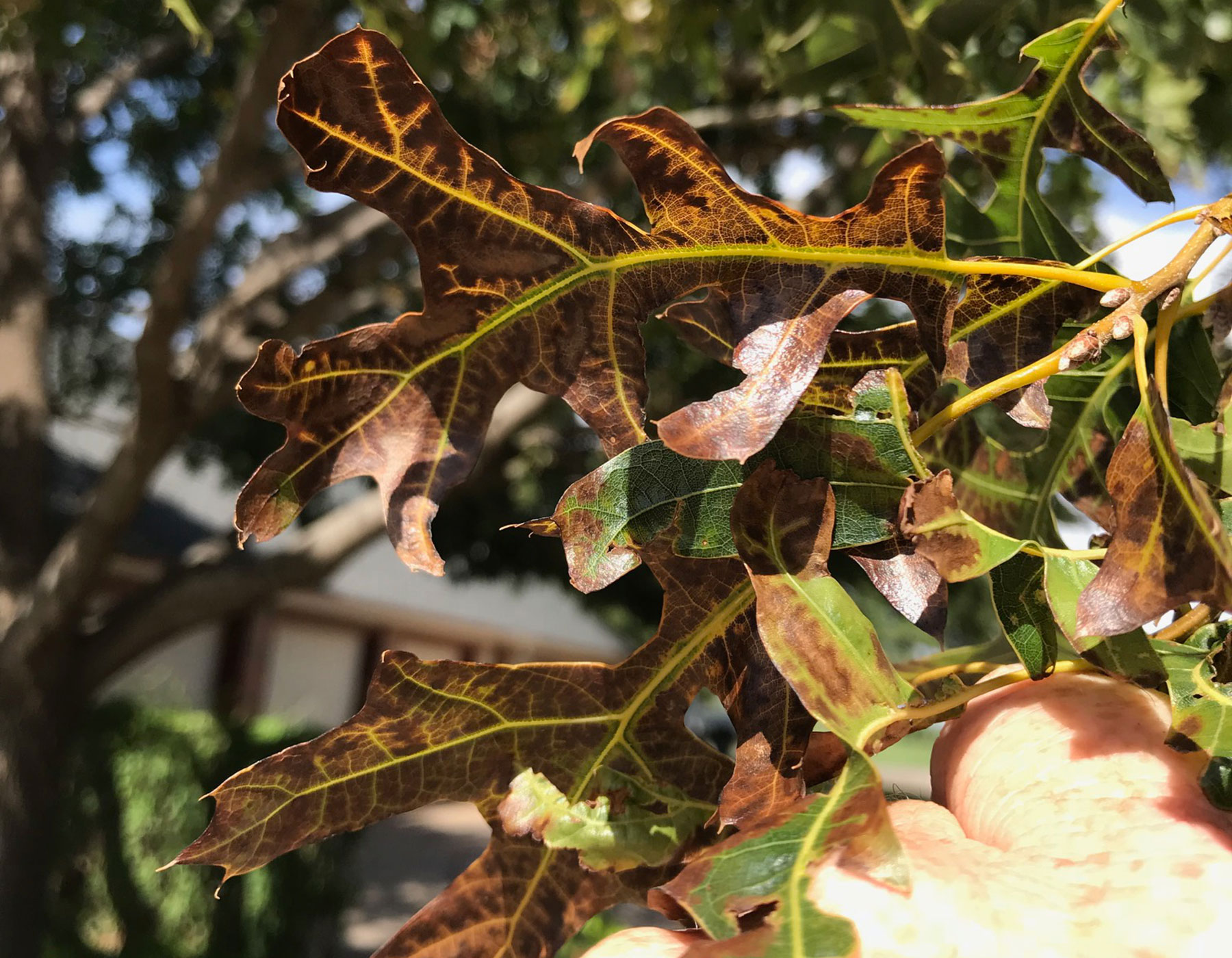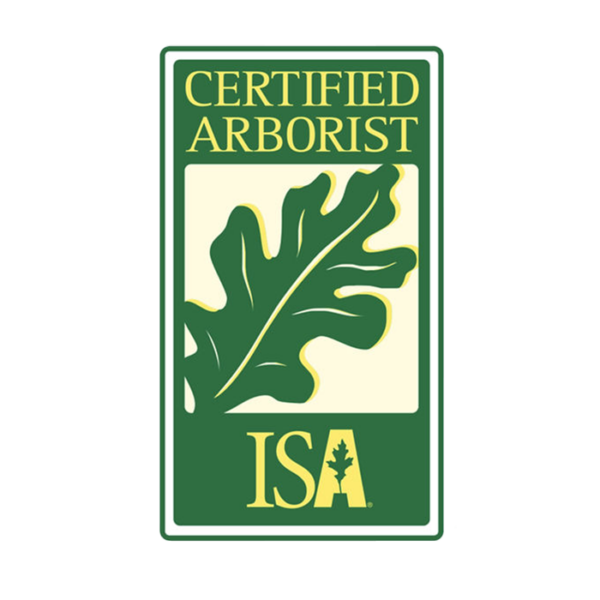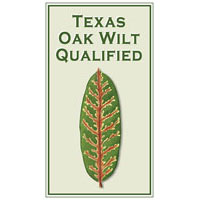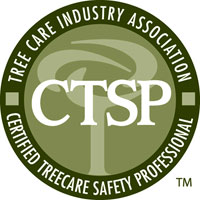As the vibrant green leaves of summer transition into the warm, earthy hues of fall, it’s a magical time for nature and outdoor enthusiasts alike. However, it’s also a crucial period for tree health. Fall presents a unique set of challenges for trees as they prepare for winter dormancy. Among these challenges are the potential threats from pests, diseases, mistletoe, overwatering and severe weather events.
At Hildebrandt Tree Tech, our goal is to provide you with practical, actionable tips and strategies to ensure your trees have the best opportunity to transition into the winter dormant season successfully, and ultimately thrive during the next growing season.
1. Leaf Diseases/Pathogens
Various fungi and bacteria that infect trees/plants throughout the growing season can continue to be prevalent during the fall. Leaf spot, powdery mildew, anthracnose and many others would be on this list. Sometimes the symptoms from these pathogens can be difficult to distinguish from other stressors. If you have noticed peculiar patterns of spotting, discoloration or die back of leaf tissue, then a leaf pathogen could be the culprit.
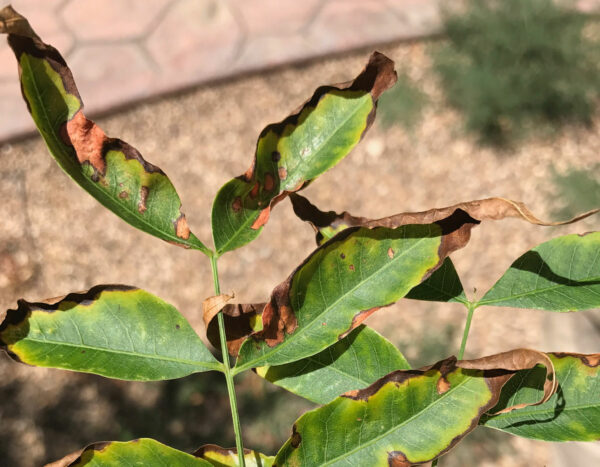
In these cases, (outside of a treatment protocol) one the most effective strategies would be to rake up all fallen leaves on your property into garbage bags and dispose of them with your garbage collection service. Keep in mind that if you have healthy leaves falling to the ground during the fall season, these are packed with nutrients and are a great source of organic matter to be incorporated back into your soil through using a mulching mower when mowing your lawn instead of bagging the clippings.
2. Insects and Other Tree Damaging Pests
Our West Texas climate usually presents very favorable conditions for many tree damaging pests such as aphids, scales, spider mites and many others. Not a single tree in West Texas is native to this region. We live in what once was a prairie grassland without trees. Trees aren’t meant to be here and that means our trees endure a significant amount of stress surviving in our region. Trees under stress are more susceptible to illness and health concerns, similar to people. Trees under stress always invite more pest and disease problems. 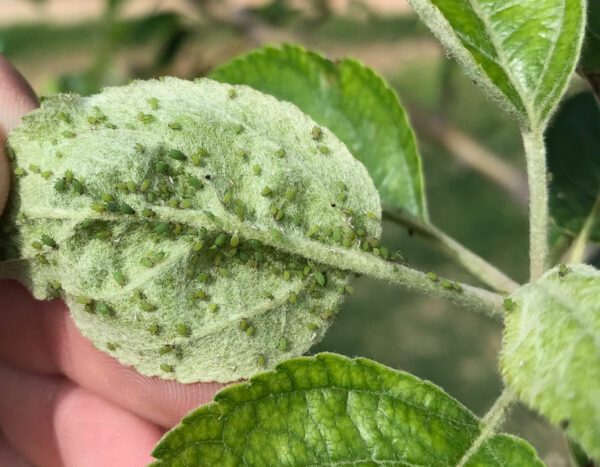
If you have noticed tiny sticky sap droplets on your vehicle windshields, patio furniture, house windows, etc., there is a high probability your trees had some of these troublesome pests this season. Not all tree pests produce sap (or honeydew). Discoloration of leaves can also be an indicator of some of our common tree pests. Promoting overall tree health through proper watering and fertilization practices is the first step in care, but if you do suspect tree pest problems then a dormant oil spray application during the cool season can be a very cost effective approach to reducing the pests that overwinter on your trees. Reducing overwintering pest populations is a fantastic strategy to get a head start on a successful growing season next year!
3. Proper Watering
Believe it or not, one the most common pathogens we see on urban landscape trees in West Texas is root rot. This is hard to imagine since we live in such a dry climate. So why is this such a common occurrence? Over watering. There is a lot of mis-information in the green industry about how much water and how often turf grass needs irrigating. 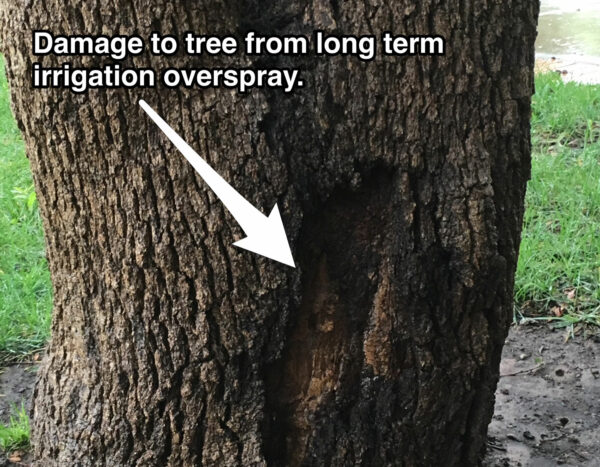
Most of our landscape trees exist in yards with grass, and, unfortunately, these trees pay the price for over watered turf grass. The biggest mistake we see this time of year from property owners is not adjusting their irrigation system for the change in weather. With cooler weather brings less evaporation and less water demand from your grass, plants, and trees. Reducing frequency and duration of watering schedules during the fall, winter, and early spring season will greatly reduce the potentially fatal consequences of the many types of root rot that can affect your trees. Here is a video about a simple way to monitor soil moisture so you know when to water.
4. Mistletoe
Although mistletoe might be a great advantage in sneaking a kiss from your significant other, it is a destructive parasite to trees. Mistletoe spreads from the sticky berries that it produces. These berries can be spread by weather and in many cases, animals (squirrels, birds, etc.). Mistletoe is a green plant and produces its own food; however, it robs water and nutrients from your trees. The most effective method of control for mistletoe is to catch it early and prune the infected limb from the tree. If pruning the limb is not practical or the mistletoe is growing from the main trunk of the tree, we recommend at least pruning the actual mistletoe plant off the tree and back to the bark of the tree without damaging the tree’s bark. This will in many cases have to be repeated each year. There are chemical sprays that claim to treat mistletoe but our experience is that physical removal of the plant is most effective and least damaging to the host tree. As the leaves drop from your deciduous trees this fall, look up into the canopy to make sure there is no mistletoe present. Winter is the easiest time of year to identify and remove this parasite from your tree.
5. Tree Support Systems (Cabling & Bracing)
Moving into winter brings increased chances of tree damage or failure due to snow, ice, and/or wind. Multi-trunk trees and trees that have codominant trunks are more likely to fail during severe weather events. If you have concerns about poor structure, weak attachments, or trees overhanging houses/buildings then fall is a great time to discuss tree support systems with your favorite ISA Certified Arborist before the winter weather might become a problem.
6. Deep Root Fertilization
Anytime we talk about tree health we always talk about healthy roots. A properly designed deep root fertilization program is as much about improving the soil quality and root growth as it is about providing nutrients. Nutrients play an important role in a deep root fertilization program, but are just one part of
the equation. During the fall and winter months in Texas, our trees can experience up to sixty percent of their annual fibrous root development. This is a great time to provide this support to your trees going into the tough winter season so they can maximize their resources in early spring. One other practical strategy for improving soil quality for your grass and trees in West Texas is to apply pelletized gypsum and pelletized chicken manure a few times per year. These applications will not yield any immediately noticeable improvements, but, if applied consistently over time, they will make drastic improvements in the health of your soil which benefits grass and trees.
Our West Texas trees are living in an environment they were never supposed to survive, let alone thrive in, and the urban landscape only compounds those environmental stressors. Without a proactive approach to tree care in West Texas, winter storms can wreak havoc on the structure of a tree, overwatering can promote fatal root rotting fungi, and various damaging tree pests just seem to be a way of life.
Implementing a proactive approach to caring for your trees this fall can be a game changer next growing season. While we can’t control the weather, there are many practical steps that we can take to give our valuable West Texas trees their best opportunity at not just surviving this winter but thriving through next year’s growing season!
If you haven’t already done so this fall – go outside, look at your trees, the leaves, the trunk, the branches. Follow these simple practical tips to prepare your trees for a successful dormant season. If you would like help developing a tree care plan this fall, call us today or reply to this email. We can schedule one of our ISA Certified Arborists to visit your property, answer your questions, and provide appropriate recommendations specific to your tree’s needs.

